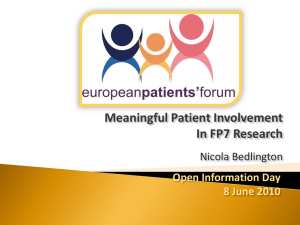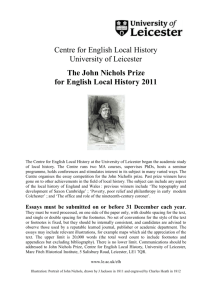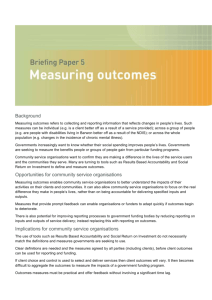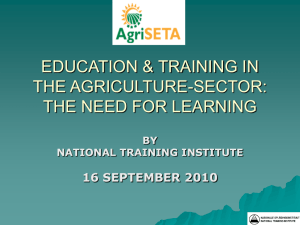Theory of change - Leicester Ageing Together
advertisement
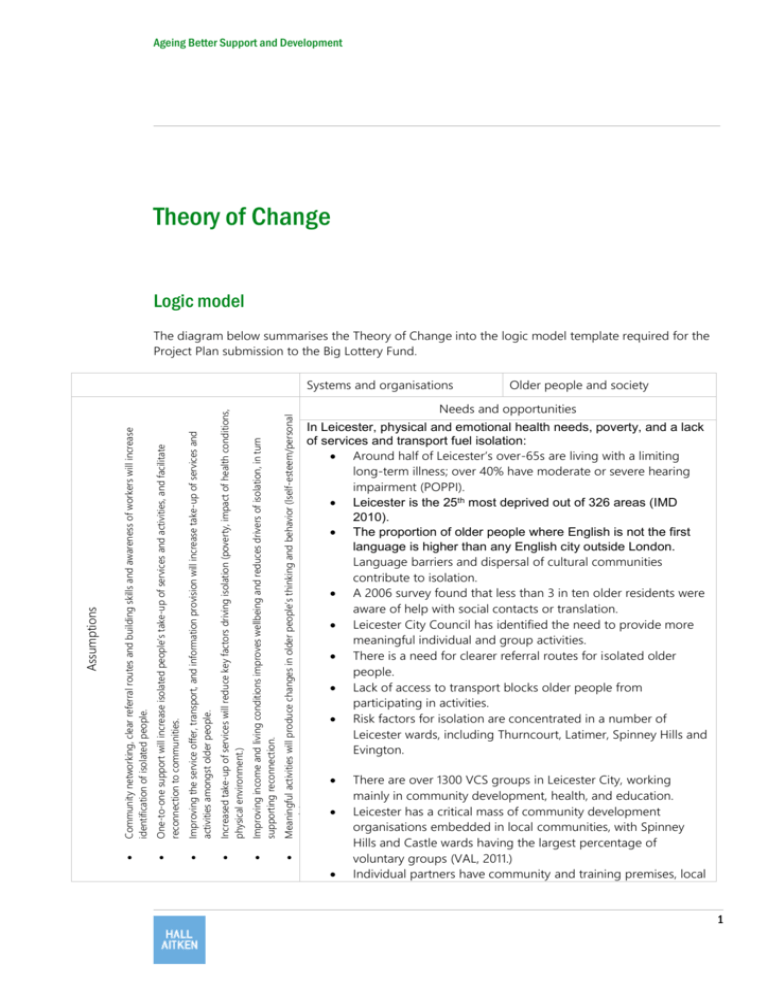
Ageing Better Support and Development Theory of Change Logic model The diagram below summarises the Theory of Change into the logic model template required for the Project Plan submission to the Big Lottery Fund. Older people and society Community networking, clear referral routes and building skills and awareness of workers will increase identification of isolated people. One-to-one support will increase isolated people’s take-up of services and activities, and facilitate reconnection to communities. Improving the service offer, transport, and information provision will increase take-up of services and activities amongst older people. Increased take-up of services will reduce key factors driving isolation (poverty, impact of health conditions, physical environment.) Improving income and living conditions improves wellbeing and reduces drivers of isolation, in turn supporting reconnection. Meaningful activities will produce changes in older people’s thinking and behavior (lself-esteem/personal growth.) Intergenerational activities will change perceptions of older people. Needs and opportunities In Leicester, physical and emotional health needs, poverty, and a lack of services and transport fuel isolation: Around half of Leicester’s over-65s are living with a limiting long-term illness; over 40% have moderate or severe hearing impairment (POPPI). Leicester is the 25th most deprived out of 326 areas (IMD 2010). The proportion of older people where English is not the first language is higher than any English city outside London. Language barriers and dispersal of cultural communities contribute to isolation. A 2006 survey found that less than 3 in ten older residents were aware of help with social contacts or translation. Leicester City Council has identified the need to provide more meaningful individual and group activities. There is a need for clearer referral routes for isolated older people. Lack of access to transport blocks older people from participating in activities. Risk factors for isolation are concentrated in a number of Leicester wards, including Thurncourt, Latimer, Spinney Hills and Evington. Assumptions Systems and organisations There are over 1300 VCS groups in Leicester City, working mainly in community development, health, and education. Leicester has a critical mass of community development organisations embedded in local communities, with Spinney Hills and Castle wards having the largest percentage of voluntary groups (VAL, 2011.) Individual partners have community and training premises, local 1 Ageing Better Support and Development networks, and expertise in health and social care, adult learning, housing, advice and information, community development, community transport, youth, the built environment, and fundraising. The City Council and Leicester City CCG recognise the need for action on isolation and are strategic partners. Key needs assessments (JSNA) and strategies (LCC Ageing Well Strategy) are in early stages of review or development. Inputs £5,115, 784 (Big Lottery Funding, Skills Funding Agency, and Vista) 1013 volunteer roles 17 VCS delivery partners Community centres and meeting spaces run by delivery and strategic partners Older people provide insight and steer Strategic partners provide local data, equalities advice, and access to statutory and voluntary sector networks and agencies Knowledge exchange with NIHR collaborators Activities Further develop older person-led governance and participation in service development. Intergenerational volunteers and partners carry out community organising and asset mapping. Support workforce development and capacity-building of organisations. Develop and disseminate better information on services. Build relationships with other agencies and organisations. Volunteers, providers, partners, and external researchers review practice and carry out monitoring Develop assessment and referral and information-sharing systems, including referrals from healthbased settings. Build relationships with other organisations and individuals in the community. Coordinate transport provision. Community Connectors contact isolated people, linking them to services and providing 1-1 support. Provide formal and informal learning activities: leisure, cultural, and social. Provide learning activities that build life skills and knowledge, including 2 Ageing Better Support and Development and evaluation. financial capability and coping with health conditions. Deliver projects enabling older people to identify needs and develop new services. Intergenerational activities. Information and advice services. Develop a City-wide Learning Network. Projects improving the home and street environment. Outputs Mechanisms for local residents to participate in programme governance and delivery. Information on services for a range of audiences. Recruitment/ referral of 6000 unique beneficiaries. Beneficiaries receive transport information and transportation. Training and capacity building support for LAT workers and organisations. 70 per cent of isolated older people engaged with the LAT programme participate in at least one meaningful activity. Agreements and systems for joint working with other organisations. Repairs and improvements to homes and streetscape. Database of information on community resources, client demographics and activities, and client outcomes. Delivery of one-to-one support to one-quarter of beneficiary cohort. Directory of services. Awareness-raising materials for families, associations, schools, and membership organisations. Information on older people’s needs. Proposals for new services. Briefings, events, publications, and presentations on LAT Programme Learning to 3 Ageing Better Support and Development community groups, practitioners and strategic decisionmakers. Intermediate outcomes Information on services reaches and is used more by older people. Older people have increased participation in meaningful activities. Older people’s access to transport is improved. Older people have increased takeup of services Organisations share service information more. Older people cope better with health conditions. Partners have increased identification of potentially isolated older people. Older people exercise rights and entitlements more. Partners have increased engagement with isolated older people. Older people have improved living conditions. Longer term outcomes Community services are more relevant and responsive to older people’s individual and cultural needs. Older people have improved wellbeing. Older people and community members have improved capabilities, knowledge, attitudes and behaviours, supporting older people’s increased participation in communities. Older people have increased contact with other community members. Wider outcomes Better evidence is available to influence the services that help reduce isolation for older people in the future. Older people are actively involved in communities with their views and participation valued more highly. Older people are less isolated. Older people are more engaged in the design and delivery of services. Services that help reduce 4 Ageing Better Support and Development isolation are better planned, coordinated and delivered. 5
